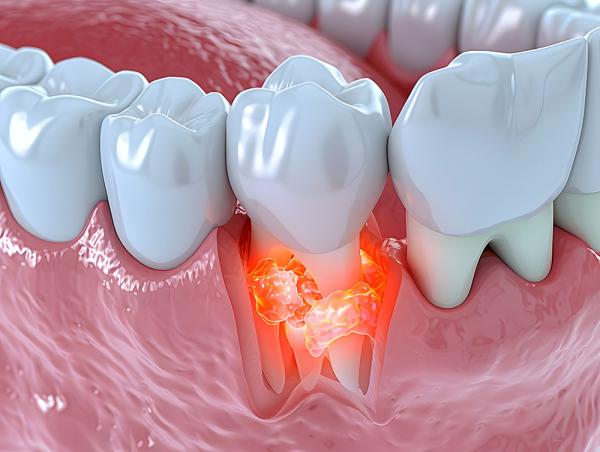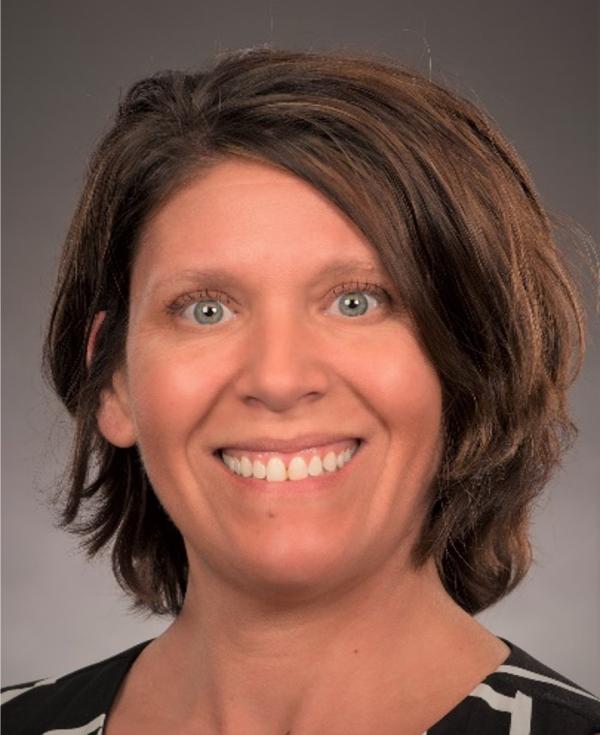Rooting Out Genetic Risks for Gum Disease
IRP’s Oral Health Experts Explore Why It’s Not Always About Brushing and Flossing

IRP researchers are investigating how genes contribute to gum disease.
When you dig into that bowl of candy this Halloween, you may want to keep in mind that those sweets are not only fueling your sweet tooth, but also an army of creepy crawlies living in your mouth, busily forming a sticky film of plaque and attacking your gums.
As Dental Hygiene Month comes to a close this October, we spoke with IRP Clinical Research Specialist Laurie Brenchley, R.D.H., a dental hygienist and clinical study coordinator in the laboratory of IRP senior investigator Niki Moutsopoulos, D.D.S., Ph.D. Together, Brenchley and Dr. Moutsopoulos are studying the link between oral health and the immune system, with a specific focus on cases in which genetic factors increase susceptibility to severe gum disease, known as periodontitis.
“Periodontitis really is a very common inflammatory disease in humans,” Brenchley says. In fact, nearly half of U.S. adults have some level of gum disease, ranging from mild to very severe. A major driver of this process is bacteria around the teeth and gums, which can trigger inflammation that can eventually cause tooth loss if it’s not controlled.
“A good rule of thumb to stave off serious disease is to have excellent home oral healthcare that includes brushing, cleaning between your teeth, and using an oral rinse two to three times a day,” Brenchley says. “However, while good oral hygiene helps keep inflammation associated with bacteria at bay, it doesn’t eliminate it. Gum inflammation and periodontal disease can be mediated by several systemic, social, and local risk factors. Our research program has utilized a bedside-to bench approach to study the interaction of immune cells, mediators, and microbes in the oral cavity and to better understand how these interactions relate to oral barrier immunity in health and exaggerated host responses often leading to earlier and more severe disease."
For the small set of patients with very severe gum disease who Brenchley sees at NIH, rare genetic mutations may be at the root of their problems.
“Here at the NIH Clinical Center, we have the unique opportunity to collaborate with medical teams that specialize in the study and treatment of patients with rare diseases and patients with single-gene mutations,” says Brenchley. “These patients are really interesting to us for at least two reasons. First, the gene disruptions can cause severe clinical symptoms, so the patients we see have significant unmet clinical needs we can help with. Second, our observations of these patients provide us an opportunity to understand the specific genes and immune pathways that are important in understanding common and severe forms of periodontal disease.”

Brushing and flossing regularly is the best way to stave off periodontitis, but people with certain genetic mutations may need more help to keep their mouths healthy.
“One of my personal, over-arching goals in the discipline of dental hygiene practice is to implement and achieve individualized patient care in addition to facilitating collaborative interprofessional teams of health professionals with the ultimate goal of improving overall health,” Brenchley adds.
One of the rare conditions Brenchley and Dr. Moutsopoulos are studying is leukocyte adhesion deficiency type 1 (LAD-1), the result of a genetic mutation that affects only about 800 to 1,000 people in the U.S. and Europe. The condition prevents immune cells from leaving the bloodstream and traveling to sites of infection to kill off the offending microbes. Depending on the illness’ severity, the symptoms can be deadly, but in less serious cases, infections like periodontitis are common. Along with other IRP researchers, Brenchley and Dr. Moutsopoulos have found evidence suggesting that blocking certain immune system signaling molecules with a drug already approved for other conditions by the U.S. Food and Drug Administration (FDA) may help the mouths of LAD-1 patients,1 a discovery Brenchley calls “very rewarding.” Their research team has also participated in scientific collaborations aimed at better understanding the role of immune cells called neutrophils in gum disease, as well as the contributions of proteins involved in wound healing and blood clotting.2

Laurie Brenchley
“Our goal is to understand the immune pathways that are imbalanced so we can identify targets for treatments,” Brenchley says. “We hope to get to a stage where we can identify the problem and get the information disseminated to the public so that they can start treatment early and prevent or cure the disease.”
The researchers are also in the process of compiling an ‘atlas’ of cells in the tooth-supporting tissues of the mouth in people with healthy gums and those with periodontitis.3 Once complete, the tool will help scientists better understand where certain cells are located and how they function in states of health and disease.
As Brenchley and her collaborators continue to pursue these projects, Brenchley says she is “joyful and appreciative” of the opportunities and experiences that have come to her in her position at NIH.
“I am able to use my educational background and training as a dental hygienist in my day-to-day clinical observations and assessments, engaging in prevention and treatment of oral diseases and conditions,” she says. “My current position as a study coordinator combines those experiences with understanding more of the basic science and genetic factors, plus the administrative requirements and wonderful collaborations with physicians, nurses, dental professionals, and scientists that are essential in research, with the goal of communication of findings and successful outcomes for public health, science, and medicine.”
Furthermore, Brenchley hopes that Dental Hygiene Month’s celebration of dental hygienists like her will help others in the profession realize how extensive the range of opportunities in the field can be.
“You can pursue different career paths, whether it’s education, administration, or research,” she says. “It’s important to me that upcoming dental hygienists understand that pursuing a position in research, such as a study coordinator, is definitely within their scope.”
References:
[1] Moutsopoulos NM, Zerbe CS, Wild T, Dutzan N, Brenchley L, DiPasquale G, Uzel G, Axelrod KC, Lisco A, Notarangelo LD, Hajishengallis G, Notarangelo LD, Holland SM. Interleukin-12 and Interleukin-23 Blockade in Leukocyte Adhesion Deficiency Type 1. N Engl J Med. 2017 Mar 23;376(12):1141-1146. doi: 10.1056/NEJMoa1612197.
[2] Silva LM, Doyle AD, Greenwell-Wild T, Dutzan N, Tran CL, Abusleme L, Juang LJ, Leung J, Chun EM, Lum AG, Agler CS, Zuazo CE, Sibree M, Jani P, Kram V, Martin D, Moss K, Lionakis MS, Castellino FJ, Kastrup CJ, Flick MJ, Divaris K, Bugge TH, Moutsopoulos NM. Fibrin is a critical regulator of neutrophil effector function at the oral mucosal barrier. Science. 2021 Dec 24;374(6575):eabl5450. doi: 10.1126/science.abl5450.
[3] Williams DW, Greenwell-Wild T, Brenchley L, Dutzan N, Overmiller A, Sawaya AP, Webb S, Martin D; NIDCD/NIDCR Genomics and Computational Biology Core; Hajishengallis G, Divaris K, Morasso M, Haniffa M, Moutsopoulos NM. Human oral mucosa cell atlas reveals a stromal-neutrophil axis regulating tissue immunity. Cell. 2021 Jul 22;184(15):4090-4104.e15. doi: 10.1016/j.cell.2021.05.013.
Subscribe to our weekly newsletter to stay up-to-date on the latest breakthroughs in the NIH Intramural Research Program.
Related Blog Posts
This page was last updated on Wednesday, October 30, 2024
